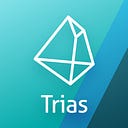TL; DR
Apps on the traditional Internet are highly centralized. In the Web3 era, however, developing apps should not be limited to centralized organizations and developers. Ethanim, as the metaverse infrastructure, employs the method of customization and community co-building to empower users with the right to create, thus achieving true decentralization.
Ethanim is a metaverse infrastructure that solves the problems of low speed of transactions, low concurrency, and the inability to support large and complex calculations in blockchain through trusted computing technology. It also modularizes edge computing, virtual GPU, decentralized storage and other technologies to improve the scalability of the system, so that decentralized metaverse apps can also have performance comparable to traditional centralized apps. Additionally, it supports users to access the metaverse using PC, mobile or VR devices, providing users with a convenient entrance to the metaverse.
In addition to optimizing performance to help users get a better metaverse experience, the building of user-generated content modules is another important feature of Ethanim and one of the indispensable elements to achieving an immersive metaverse experience.
In the past, apps are highly centralized. The developer is in complete control of the app, while the users have few rights. With the decentralized narrative of Web3, metaverse apps are not supposed to be like this. As the driving core of the metaverse, user-generated content and value are what matter.
Therefore, in Ethanim, the power structure of the metaverse is decentralized. The R&D team is not the only subject of content generation, all users can participate in the construction of the metaverse. Ethanim enables users to enjoy a higher degree of ownership and autonomy.
Programmable Metaverse
Ethanim allows users to design their own metaverse mechanism. They can import objects in the real world such as images, audio, 3D models into the metaverse to generate NFTs, program the imported NFT to give it new functions, and then create a game for NFT or apply it to a project in the Ethanim ecosystem. For example, as a game developer, the user can use Loot NFT to generate a game character and then create a game for this character or use it to enter into other metaverse projects.
The programmable metaverse allows Ethanim users to unleash their creativity in the framework of Ethanim. Under this mechanism, players can create their own metaverse and also enjoy things created by other players to build a multi-universe, so that each universe can be connected and have the force to extend.
Community Co-creation Metaverse
Power in the Ethanim metaverse belongs to the users. Bringing power back to the individual is an important hallmark of Web3. In Ethanim, ownership of the app is no longer exclusive to the developer, but shared by all community participants. Through Ethanim’s Reliable State Machine (RSM), users can keep track of the development dynamics of the app in real-time, and developers can’t modify the parameters or turn off functions of the app at will.
In addition, Ethanim’s immortal file system stores all the code files and state snapshots of the metaverse app. When the app is upgraded, if any user is not satisfied with the new version, he can revert to any previous version through the system. The old and new versions can coexist with each other. Users can maintain their own independent operation, and the development path of the app will be decided by users through DAO voting.
Official website: https://www.trias.one
Whitepaper: https://www.trias.one/whitepaper
Telegram: https://t.me/triaslab
Twitter: https://twitter.com/triaslab
Discord: https://discord.gg/uSHpezwKWZ
Notion: https://www.notion.so/Trias-62b0088a57a74c62b22099206464426d
Trade on Pancake: https://triaslab.medium.com/how-to-buy-trias-on-pancakeswap-d9bd1628e69f
